Building a DIY chicken tractor offers an affordable way to raise chickens while providing them with a movable shelter. With a variety of free plans available, anyone can create the ideal home for their birds. These plans come with easy-to-follow instructions, making the construction process enjoyable for builders of all skill levels.
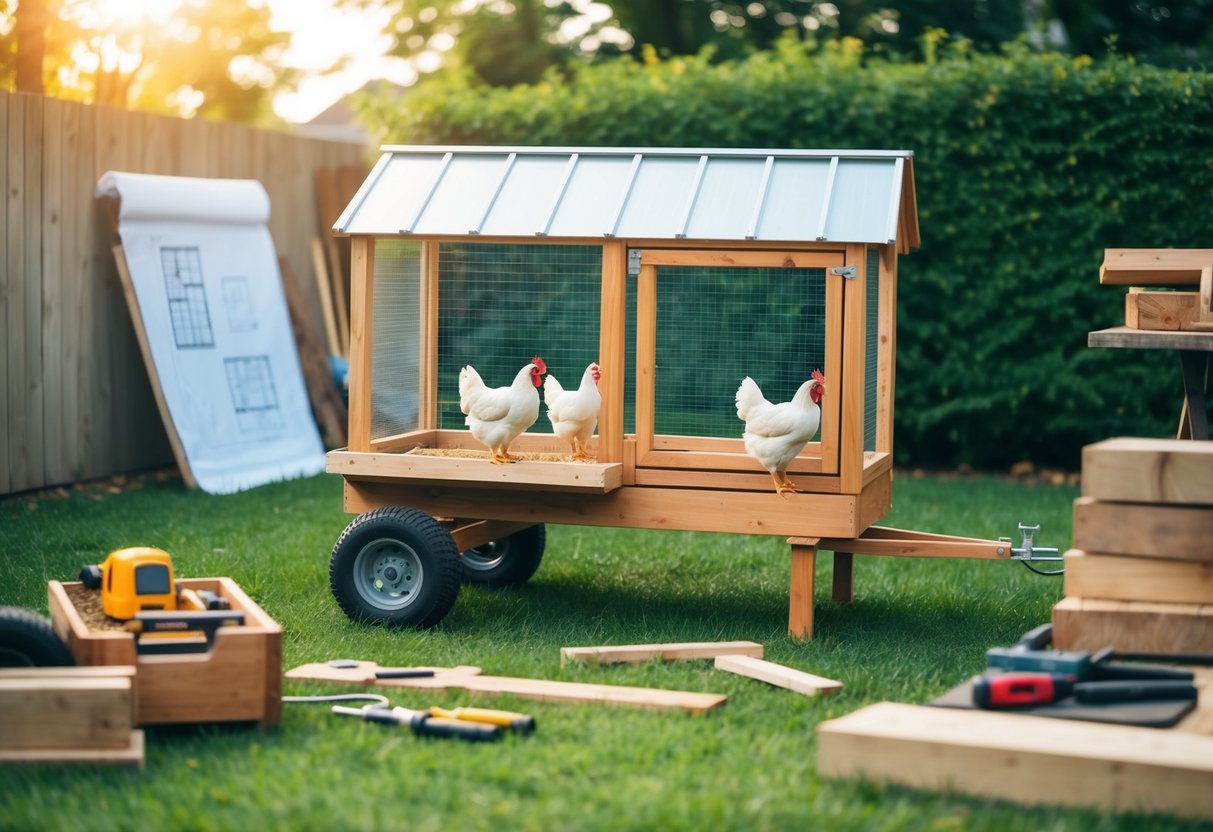
There are numerous styles of chicken tractors to choose from, catering to different needs and spaces. From compact designs for small backyards to larger structures that can accommodate multiple chickens, options abound. Some designs even feature wheels for effortless mobility, ensuring chickens can enjoy fresh grass and a safe environment. With thoughtful plans available, anyone can create a cozy and secure habitat for their chickens.
Understanding Chicken Tractors and Their Importance
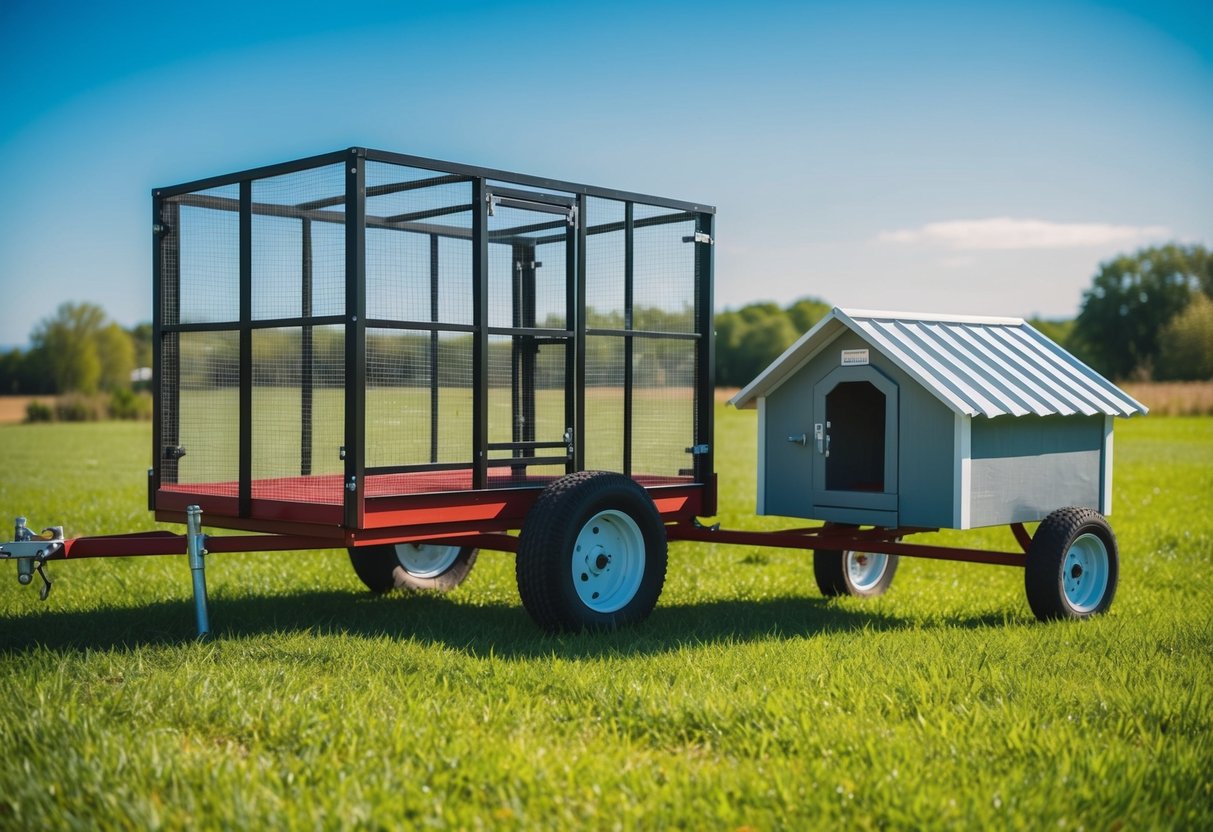
A chicken tractor is a portable coop designed to offer chickens a secure and free-range environment. Typically constructed from wood, wire, and equipped with wheels, it can be easily relocated across yards and gardens. Utilizing a chicken tractor brings several advantages.
Benefits of Chicken Tractors
- Access to Natural Food: Chickens can enjoy fresh grass, bugs, and worms, enhancing their diet with nutritious options.
- Protection from Predators: The enclosed structure safeguards chickens against threats like foxes, hawks, and dogs.
- Prevention of Escapes: A chicken tractor keeps chickens contained, preventing them from straying into neighboring properties or facing other dangers.
- Soil Enrichment: Chickens help improve the soil by scratching and digging, while their droppings act as natural fertilizer.
- Feed Cost Reduction: With access to outdoor food sources, chickens require less commercial feed, lowering overall expenses.
- Enhanced Health and Welfare: The additional space and activity contribute to the overall well-being and happiness of the chickens.
For anyone looking to cultivate a vibrant and productive garden while raising cheerful and healthy laying hens, investing in a chicken tractor is a smart choice. It is not only practical but also beneficial for both the chickens and the garden.
Selecting the Ideal Size, Shape, and Design for Your Chicken Tractor
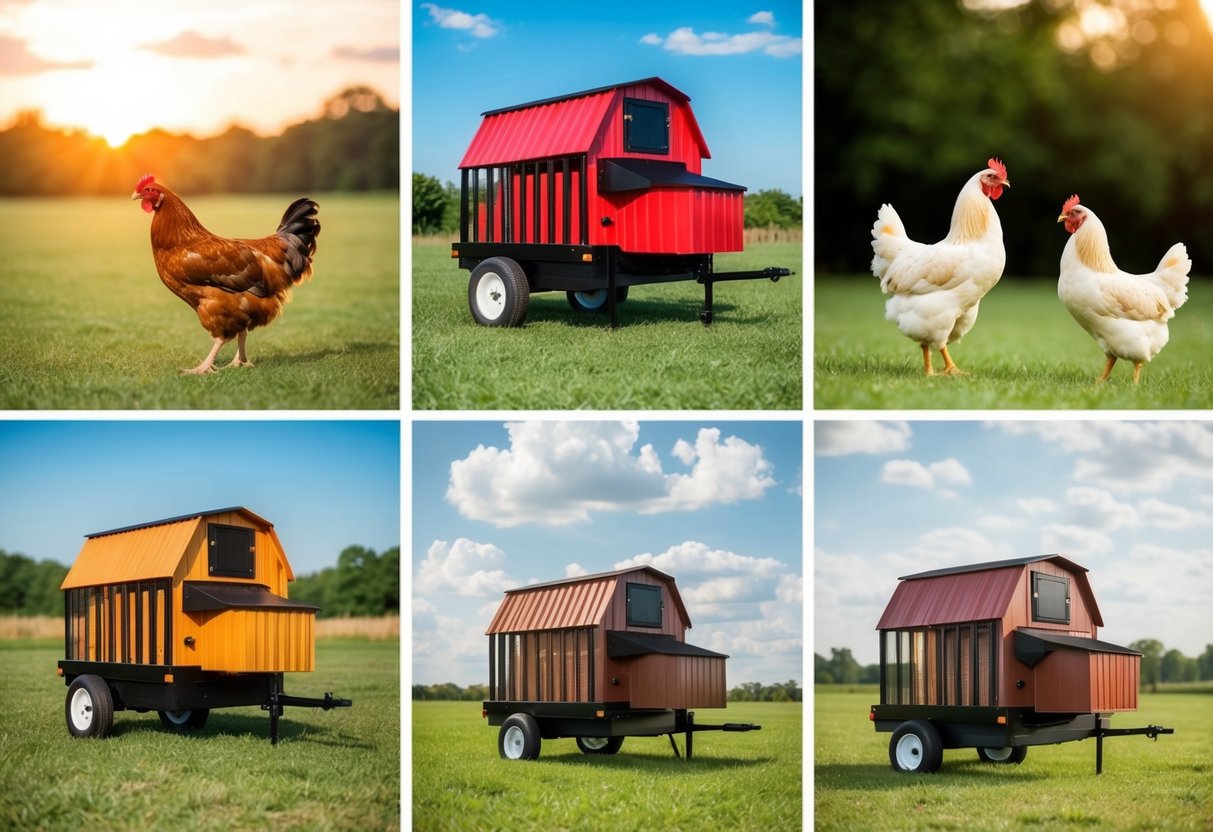
Choosing a chicken tractor involves several considerations that depend on unique circumstances.
Factors to consider include:
- Number of Chickens: The size of the tractor should fit the chicken population. Aim for 4 square feet of space per chicken inside the coop and at least 10 square feet per bird in the run.
- Available Space: The dimensions of the yard or garden will significantly influence the design. Smaller spaces may require compact designs, while larger areas can accommodate more substantial structures.
- Climate Conditions: Weather impacts the design. In areas with heavy rain or snow, ensure the tractor has a solid roof and proper drainage to keep chickens dry.
- Personal Preferences and Budget: Cost and tastes play a role. Determine the budget up front and choose materials that reflect personal style without overspending.
When it comes to shape, practicality is key. Rectangular or square shapes generally allow for easier movement compared to circular or triangular forms.
Considerations for adding handles or hooks can enhance mobility and ease of use.
For design, durability is crucial. Using sturdy materials such as wood, metal, or plastic is recommended. Cover the structure with wire mesh or hardware cloth for safety and ventilation.
Functional elements like nesting boxes, roosting bars, and ventilation holes are essential for chicken comfort. Including features like feeders, waterers, ramps, and secure latches can enhance the tractor’s usability.
Many resources and DIY plans are available online for inspiration. These can be customized to meet specific needs, ensuring a suitable and effective chicken tractor design that works well for any situation.
Materials and Tools You Will Need to Build a Chicken Tractor

Building a chicken tractor requires a variety of materials and tools that are both accessible and affordable. Here’s a list of what is needed:
Essential Materials
- Wood: The frame of the chicken tractor typically requires different types of wood. Common sizes include 2x4s, 2x2s, and plywood. Reclaimed wood from sources like pallets can also be a cost-effective option.
- Wire Fencing: For protection against predators, use hardware cloth with small openings (½ inch or smaller). This material is more secure than chicken wire, which can be used for the run if budget is a concern, but it offers less security.
- Wheels: To make the chicken tractor mobile, incorporate wheels. Choices include caster wheels, bicycle wheels, or even lawn mower wheels. Alternatively, skids can replace wheels for easier movement across various surfaces.
- Hardware: Assembly and security require several types of hardware. Essential items include screws, nails, hinges, latches, and hooks. Materials like zip ties and wire clips can be effective for attaching the wire to the frame securely.
- Tarps: Tarps are useful for providing shade or rain protection. They can be draped over the structure as needed.
Tools Needed
- Cutting Tools: A saw is necessary for cutting wood to size. Options may include a circular saw or a jigsaw, which provide efficiency for larger projects.
- Drill: A drill is crucial for making holes and fastening pieces together, making the construction process smoother.
- Measuring Tools: A tape measure and level are essential for ensuring accurate dimensions and structural integrity.
- Other Tools: Basic tools like a hammer and screwdriver are important for assembling the frame and securing parts.
Optional Materials
- Cattle Panels: These can serve as a strong option for creating walls or the roof of the tractor.
- Electrical Conduit: This material can be used to build lightweight and robust frames, particularly for the structural support of the tractor.
Adjust these materials and tools based on specific designs or personal preferences for best results.
Step-by-Step Guide to Building a Simple and Functional Chicken Tractor
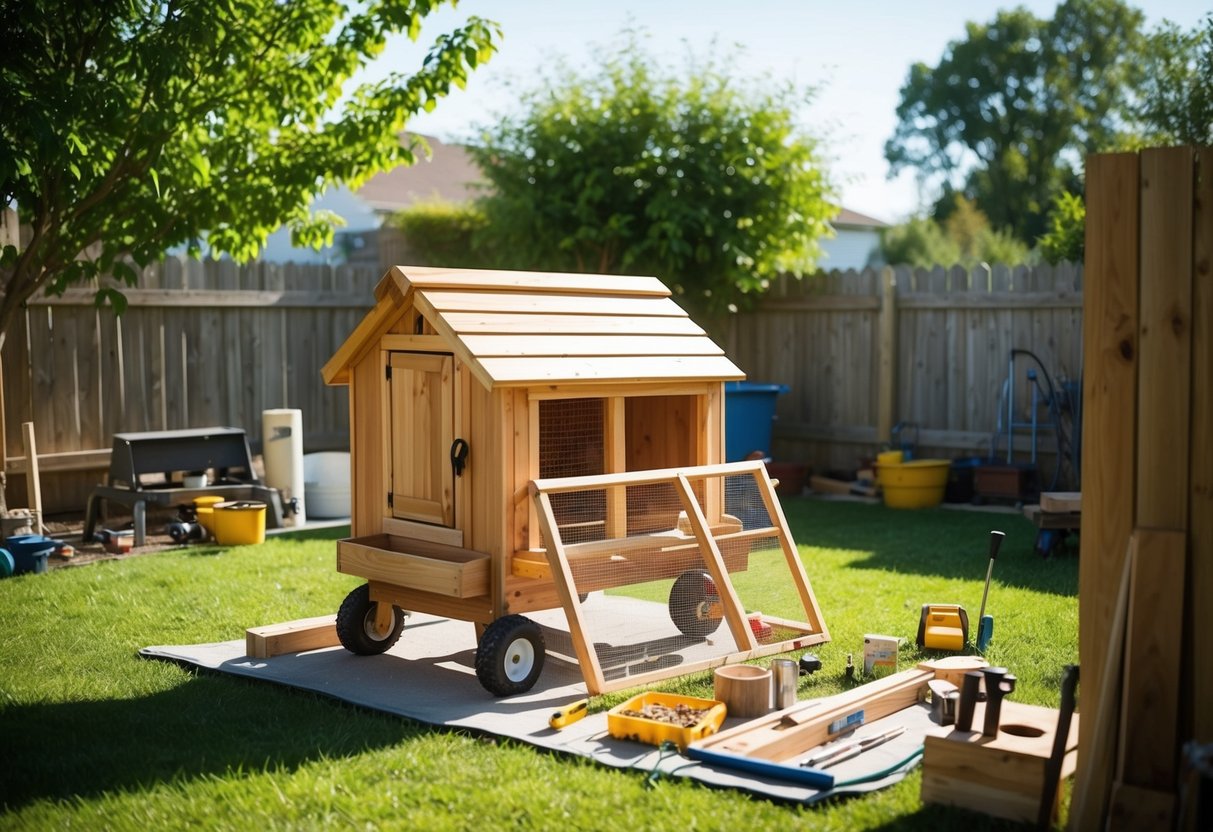
Building a chicken tractor can be a straightforward project that doesn’t take much time. With the right materials and tools, one can create a space for chickens to roam and enjoy fresh grass while staying safe. Here’s how to build a basic chicken tractor suitable for six chickens.
Materials Needed:
- Wood:
- Four 2x4s, each 8 feet long (for the base)
- Four 2x4s, each 4 feet long (for the uprights)
- Four 2x4s, each 6 feet long (for the roof)
- Four 1x4s, each 4 feet long (for the braces)
- Plywood:
- Two pieces, each 4×4 feet (for the floor and back wall)
- Wire Mesh or Hardware Cloth:
- Enough to cover the walls and roof
- Fasteners:
- Screws or nails
- Zip ties or wire clips (for attaching the mesh)
Steps:
- Prepare the Wood: Start by cutting the wood pieces according to the sizes mentioned above. This includes the base, uprights, roof beams, and braces. Having everything ready will make assembly easier.
- Build the Base: Assemble the base by joining the four 2x4s (8 feet long) to form a square. Secure each corner with screws or nails. Place one of the plywood pieces (4×4 feet) on top as the floor and attach it firmly.
- Add Uprights: Attach one 2×4 (4 feet long) to each corner of the base for the uprights. Be sure they stand straight up and are level with each other. This structure will support the roof.
- Construct the Roof: For the roof, take two of the 2x4s (6 feet long) and attach them to the front and back of the uprights. These should run parallel to each other. Next, attach the other two 2x4s (6 feet long) to the sides, ensuring they cross the first two at a right angle. This creates a sturdy roof frame.
- Add Roof Braces: To enhance stability, attach one of the 1x4s (4 feet long) diagonally on each side of the roof frame. This diagonal support will help keep everything secure.
- Attach Wire Mesh: Cut the wire mesh or hardware cloth to fit the walls and roof of the structure. Use zip ties, wire clips, or staples to secure the mesh tightly to the frame. Ensure there are no sharp edges exposed and that there are no gaps for predators to enter.
- Finish the Back Wall: Attach the remaining plywood piece (4×4 feet) to form the back wall. Use screws to fix it to the back uprights and roof, sealing off the coop and providing protection.
- Incorporate Features: Depending on preferences, different amenities can be added inside the chicken tractor. Items like nesting boxes, roosting bars, and feeding areas can be crafted from wood or other materials. Ventilation holes and windows may also be included to ensure comfort for the chickens.
- Install Mobility Features: For ease of movement, consider adding wheels or skids at the base. Attach these securely with screws. This will make it simple to shift the chicken tractor to fresh grass or different areas of the yard.
Now, with each of these steps followed carefully, the chicken tractor is complete and ready for its feathered residents. This unit not only offers a safe environment but also allows chickens to forage naturally, improving their diet and happiness. Enjoy the experience of raising chickens in your newly built tractor!
Common Mistakes and Problems to Avoid When Building and Using a Chicken Tractor
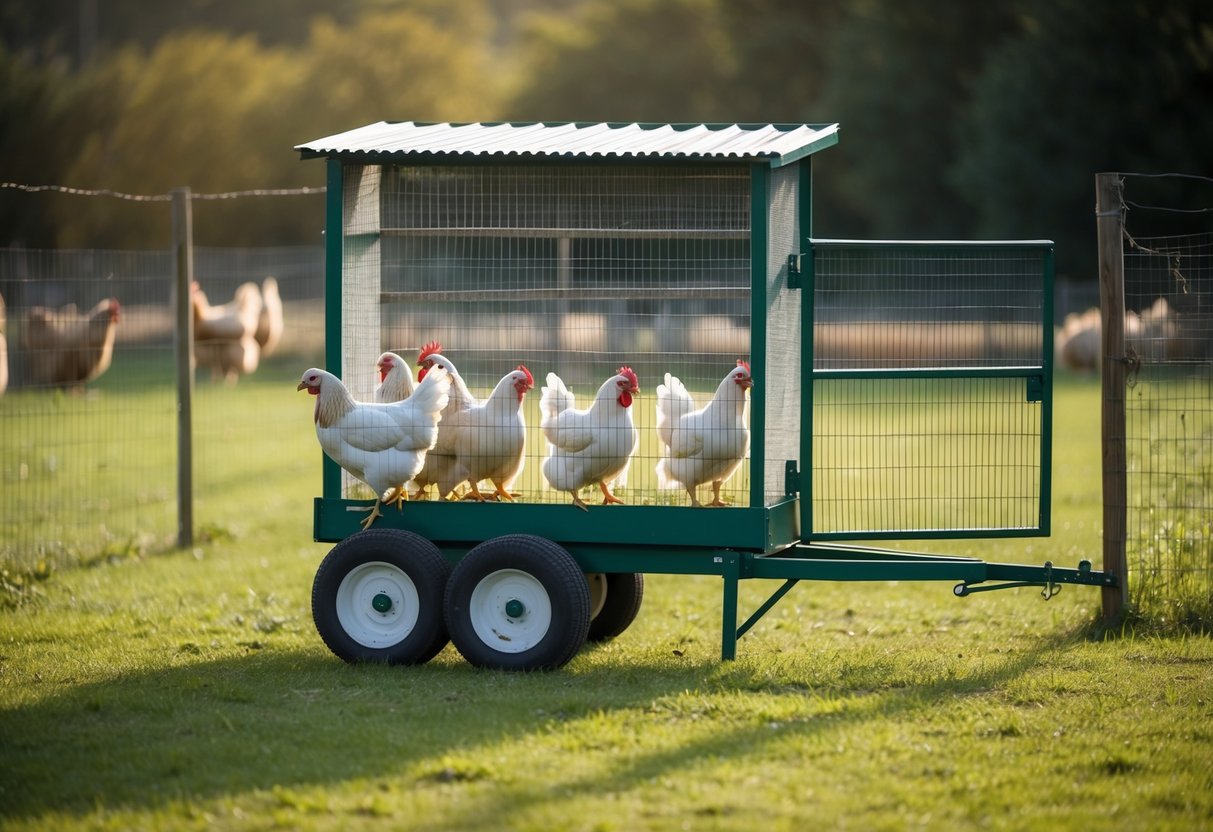
Building and using a chicken tractor involves various considerations to ensure the safety and comfort of the chickens. Many common mistakes can lead to challenges that may affect their health and productivity.
- Size Matters: It is essential to build a chicken tractor that fits the number and size of the chickens. A cramped space can lead to stress and illnesses among the flock. Conversely, a tractor that’s too large may become cumbersome to move and maintain.
- Predator Protection: Securing the chicken tractor against predators is crucial. Foxes, raccoons, and snakes can easily infiltrate a poorly fortified structure. Using heavy-duty materials and reliable locks will enhance safety and help keep the chickens secure from potential threats.
- Sturdiness is Key: The chicken tractor must be well-built to withstand external pressures. A flimsy structure can expose the chickens to the elements and predators. Employing durable materials and regularly inspecting for wear and tear will help maintain its integrity.
- Comfort and Functionality: Chickens thrive in environments that cater to their basic needs. A lack of proper ventilation, lighting, bedding, nesting areas, and access to food and water can make chickens unhappy and less productive. A clean and functional tractor will foster a better living space for them.
- Movement Frequency: It’s important to find a balance in how often the chicken tractor is moved. Excessive movement can confuse the chickens, while rarely moving it can damage the soil and deprive chickens of fresh grass. Regular movement every few days or weeks is recommended, based on the space available and the size of the flock.
- Choose the Right Location: The placement of the chicken tractor plays a significant role in ensuring chicken safety and comfort. Placing it in a flat, dry, and shaded area away from roads, power lines, and potential hazards is essential. This helps mitigate exposure to wildlife corridors that may pose risks.
By being mindful of these factors, one can create a chicken tractor that is not only a safe haven for the chickens but also supports their overall well-being and productivity.
Enhancing Comfort and Security in Your Chicken Tractor
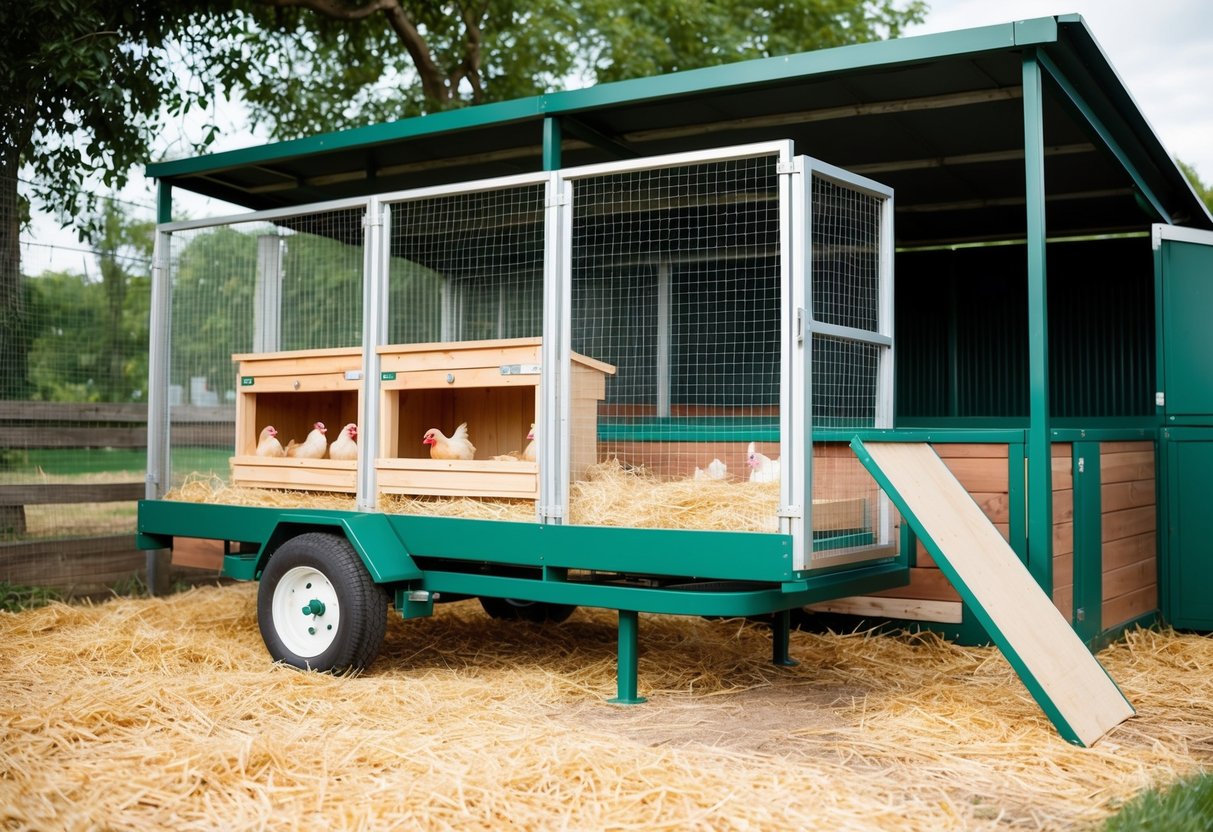
Creating a comfortable and safe home for chickens in a chicken tractor is essential for their health and productivity. Here are some effective tips to achieve this.
Provide Soft Bedding
Bedding creates a cozy atmosphere and serves multiple purposes. Using materials like straw, hay, wood shavings, or leaves provides insulation and absorbs moisture. It is crucial to replace bedding regularly to maintain cleanliness and dryness.
Install Perches for Roosting
Roosting is a natural behavior for chickens, and providing adequate perches is important. Perches can be made from wood, metal, or durable plastic. There should be at least 8 inches of perch space per chicken, and the perches should be positioned 18 inches off the ground to keep them safe.
Create Nesting Boxes for Egg Laying
Chickens need a quiet and private place to lay eggs. Installing nesting boxes is vital for their comfort. These boxes can be constructed from wood, metal, or plastic, and it is recommended to have one box for every four chickens. Filling the boxes with soft bedding, such as straw or hay, will encourage usage.
Set Up Feeders and Waterers
Feeders and waterers must be accessible and clean. Using materials like metal, plastic, or ceramic will ensure they are durable. They should accommodate the number of chickens and should always be full to keep the chickens hydrated and nourished.
Ensure Proper Ventilation
Good air circulation is essential for chickens’ health. Adding ventilation holes can help regulate temperature and keep the air fresh. A good rule is to provide one square foot of ventilation for every 10 square feet of floor space. Placing these holes on opposite sides of the chicken tractor ensures cross ventilation.
Incorporate Windows for Natural Light
Windows allow natural sunlight and visibility, vital for a chicken’s well-being. Using materials like glass or plexiglass, it is advisable to have at least one square foot of window for every 10 square feet of floor space. Positioning these windows on the south or east side of the tractor maximizes sunlight exposure.
Create Access Points with Doors
Easy access is crucial for both chickens and caretakers. Adding doors made from wood, metal, or plastic is necessary. Ideally, there should be one door for every 10 chickens, installed on the front or the side of the coop for convenience.
Use Ramps for Easy Movement
For multi-level tractors, ramps provide easy access between levels. These can be made from wood, metal, or sturdy plastic. It’s best to have one ramp for every 10 chickens and ensure they are fixed securely for stability.
Secure Openings with Strong Latches
Keeping chickens safe from predators is a priority. Adding latches to all doors and windows is essential. Materials like metal or tough plastic work well. Each opening should have at least one latch to ensure everything is securely closed.
By implementing these strategies, chicken owners can create a comfortable and secure environment. Happy and healthy chickens not only lay quality eggs but also contribute positively to any backyard farm.
Moving and Cleaning Your Chicken Tractor Regularly
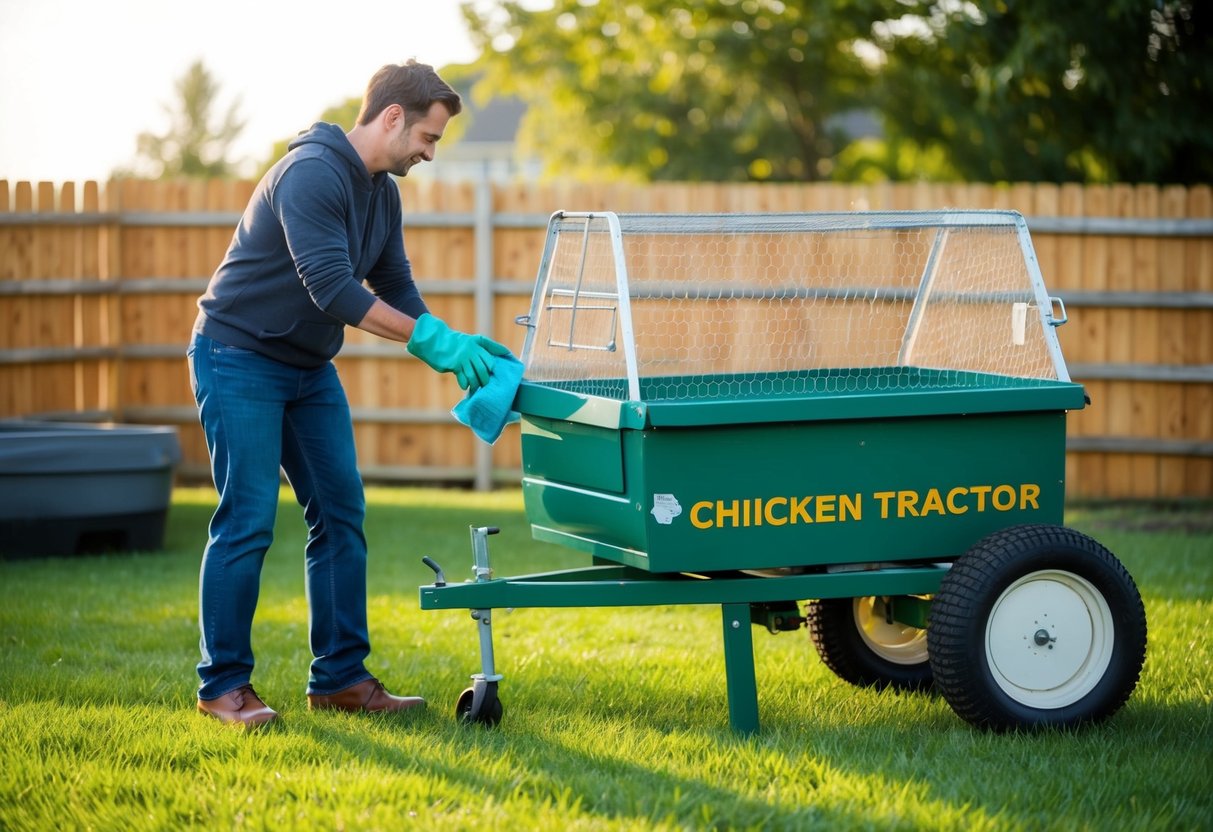
Regularly moving and cleaning a chicken tractor is essential for keeping the coop and surrounding garden in good condition. This practice helps prevent disease, pests, unpleasant odors, and waste build-up. Here are the steps to effectively move and clean a chicken tractor.
- Step 1: Plan the Move
It is important to establish a schedule for moving the chicken tractor. Depending on the size of the area and the number of chickens, it may need to be moved every few days or weeks. Before moving, ensure the route is clear of obstacles, hazards, or slopes to prevent any damage to the tractor or injury to the chickens. - Step 2: Prepare the Chickens
Moving should be done when the chickens are calm, ideally in the early morning or late evening. Make sure to secure all doors and windows of the coop to keep the chickens safe and contained during the transition. - Step 3: Execute the Move
Utilize the handles, hooks, or wheels designed for the chicken tractor to lift and drag it to the new location. For larger or heavier tractors, it can be beneficial to enlist the help of a partner or use a vehicle for assistance. - Step 4: Settle in the New Spot
Position the chicken tractor on level, dry ground, away from any busy roads, power lines, trees, or fences. Once it is securely placed, open the doors and windows, allowing the chickens to explore their new environment freely. - Step 5: Clean the Previous Location
After relocating, it is crucial to clean the original spot. Remove bedding, feeders, waterers, and nest boxes from the tractor. Dispose of waste properly or reuse materials whenever possible. Scrub and disinfect surfaces such as the floor, walls, and roof using a mixture of water and vinegar or bleach. Finally, rake and compost the soil where the chicken tractor was located to rejuvenate it.
By maintaining a regular routine of moving and cleaning the chicken tractor, a healthy living space is ensured for the chickens. This practice not only keeps the environment fresh but also offers the chickens new sources of food and enrichment.
Advantages of Using a Chicken Tractor for Gardening and Soil Health
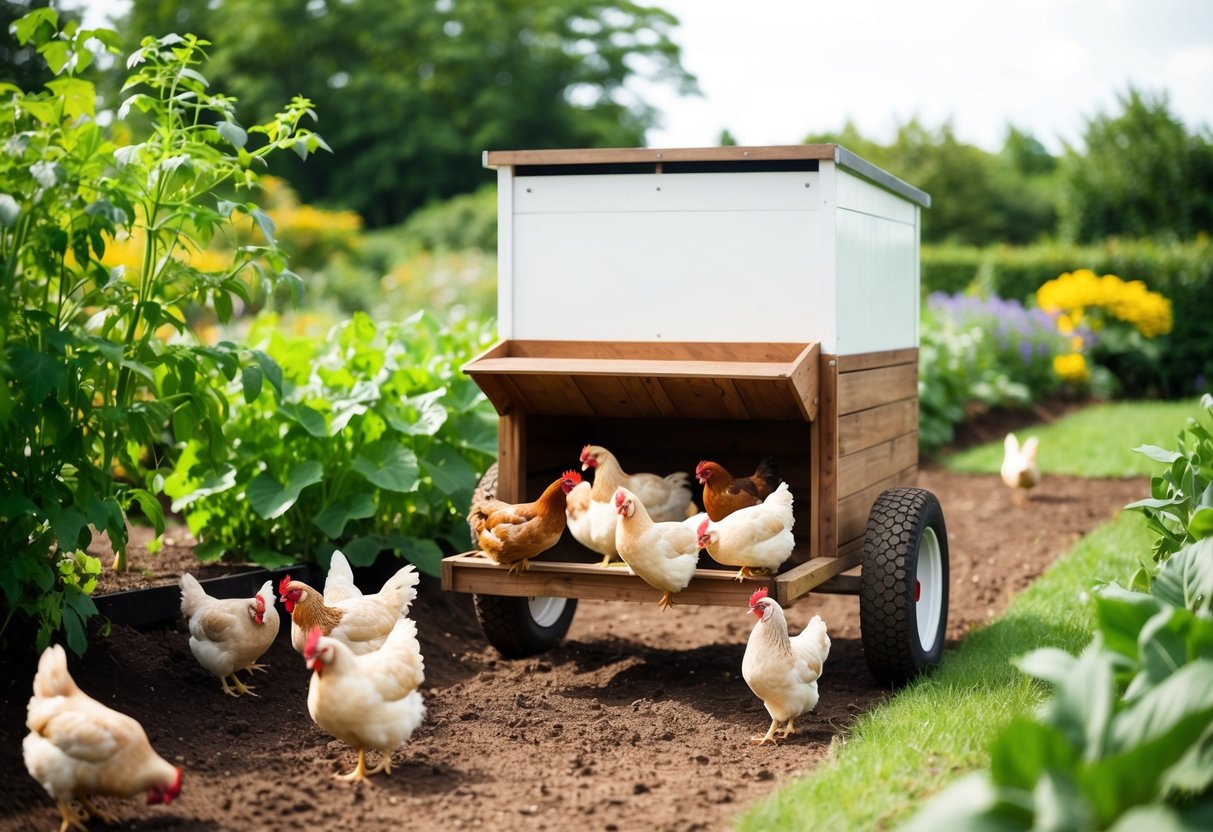
A chicken tractor serves as an effective tool for enhancing garden and soil health through sustainable methods. Here are key advantages:
- Enhances Soil Quality: Chickens naturally improve soil texture and fertility by scratching and digging. Their droppings act as a natural fertilizer, enriching the soil with essential nutrients and improving drainage and aeration. This process can decrease the need for synthetic fertilizers and pesticides, allowing for a healthier garden.
- Weed and Pest Control: Chickens are excellent at managing weeds and pests. They will consume unwanted plants and insects, helping to maintain a balanced ecosystem. This reduces the reliance on manual weeding and harmful chemical treatments that can adversely affect soil and plant health.
- Boosts Crop Yield: Utilizing a chicken tractor can significantly increase the productivity of various crops. Chickens assist with pollination and can even help in pruning, promoting healthier plant growth. This method also encourages the cultivation of diverse plant species that thrive together, further enhancing the productivity of the garden.
- Minimizes Waste: Building and using a chicken tractor can help reduce waste. Many materials may already be available, and when the tractor needs repairs, most parts can be reused or recycled. Plus, raising chickens for eggs or meat decreases reliance on store-bought products, which contributes to a lower carbon footprint.
Integrating a chicken tractor into gardening practices offers many natural benefits. It helps create a more productive and sustainable environment, taking full advantage of the benefits of pastured poultry.
How to Personalize and Adorn Your Chicken Tractor
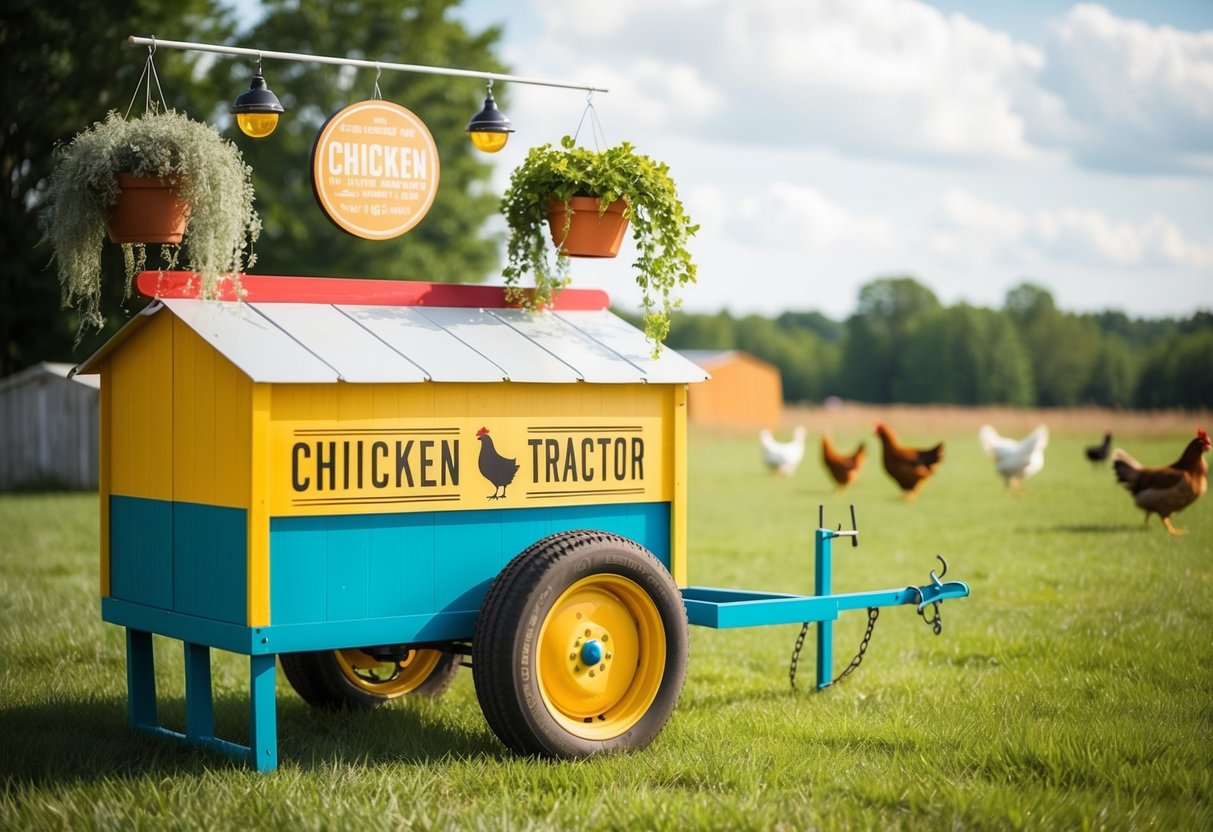
Customizing a chicken tractor allows for personal expression and creativity. Here are some engaging options to enhance its appearance.
1. Apply Some Paint
One of the easiest ways to give a chicken tractor a fresh look is through paint. Selecting the right type is crucial based on the tractor’s material—wood, metal, or plastic. Opt for paint that is non-toxic, weather-resistant, and simple to clean. Colors and patterns can be tailored to fit the garden or home aesthetic, allowing for a splash of personality.
2. Install Signs or Labels
Adding signs or labels can give the chicken tractor character and identity. Different materials such as wood, metal, or cardboard can be used for this purpose. Creatively written names or fun messages can be made using markers, stickers, or stencils. This allows individuals to showcase their personality or theme through unique identifiers.
3. Decorate with Accessories
Incorporating accessories or ornaments into the design adds a charming flair. Various materials like metal, fabric, or wood can be utilized to adorn the tractor. Options include flags, ribbons, flowers, or even decorative lights. Choosing items that resonate with personal style or complement the surrounding garden can bring a whimsical touch to the tractor.
Embrace Individuality
By taking the time to customize a chicken tractor, it transforms into a unique focal point in the yard. This decorative endeavor not only enhances the tractor’s appeal but also reflects individuality and creativity. Whether through color, signage, or accessories, there are countless ways to make it truly one-of-a-kind.
Free DIY Chicken Tractor Plans
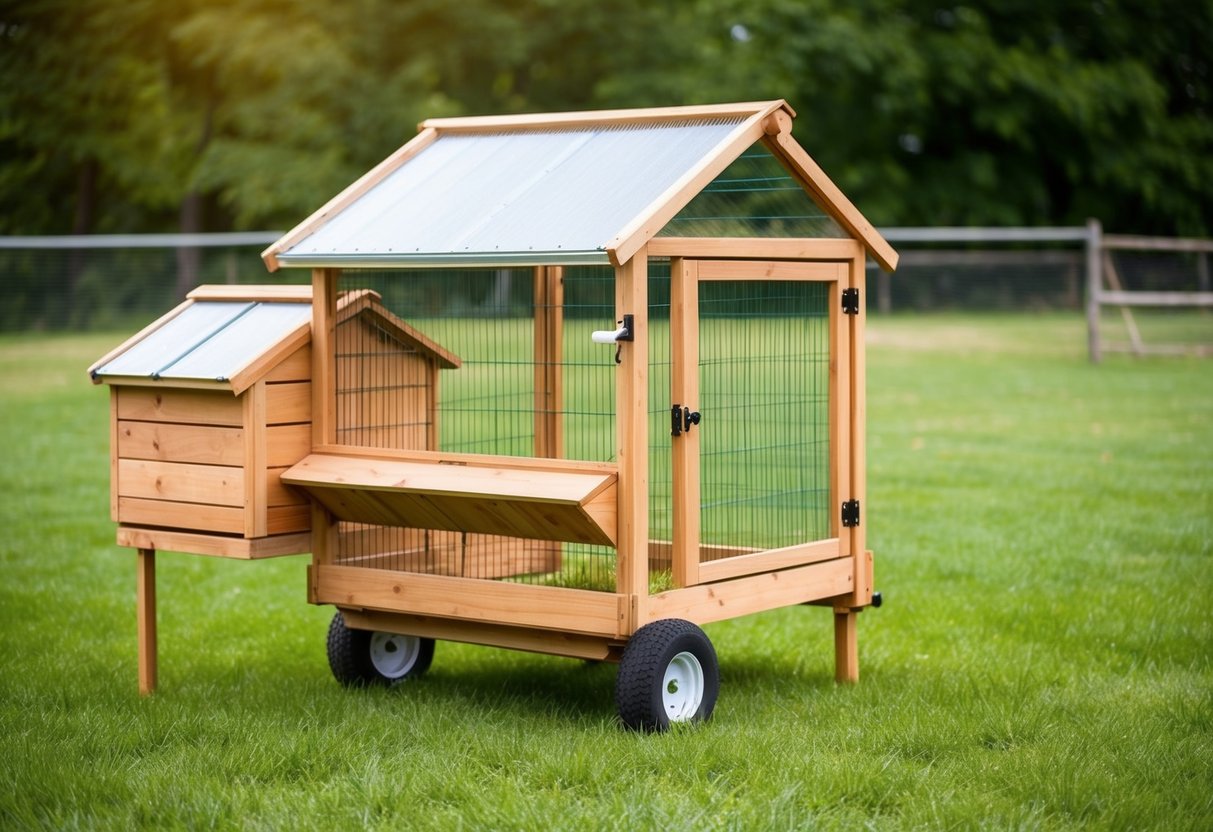
A chicken tractor built from a DIY plan is an excellent choice for sustainable farming. This structure provides a secure environment for chickens while allowing for easy movement across the yard. This mobility enhances soil health and aids in pest control.
Here are 25 free chicken tractor plans that offer clear instructions and illustrations for construction. These plans are available for download or online viewing. They cater to various skill levels, ensuring that anyone can find a suitable guide to build their chicken tractor effectively.
1. Mobile DIY A-Frame Chicken Tractor
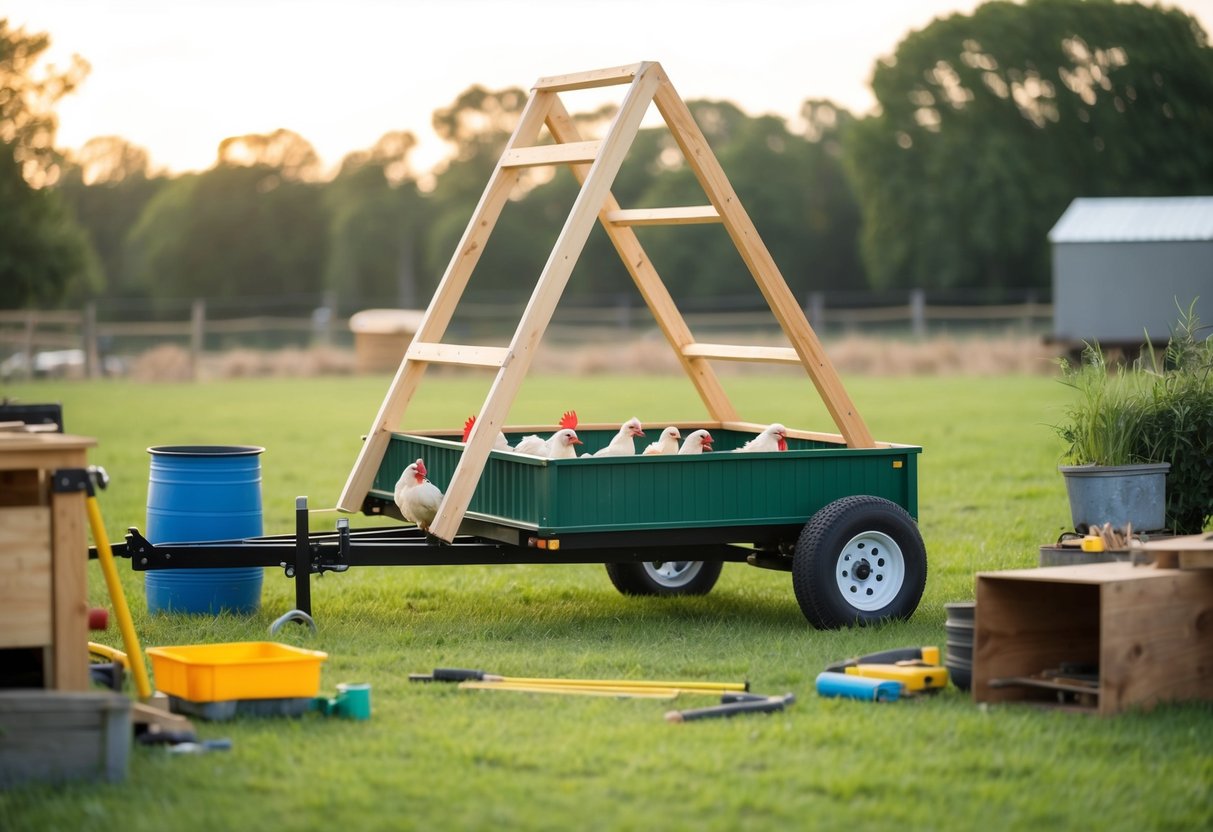
Building a durable mobile chicken coop can be simple and rewarding. An A-frame chicken tractor designed at 8′ x 12′ can house 65-70 meat birds or 15-20 egg layers comfortably. This type of tractor features robust materials like painted steel roofing and chicken wire. These elements protect chickens from rain and heat while ensuring proper ventilation. Its lifespan can surpass 25 years. View the video tutorial for easy assembly steps on creating this versatile A-frame mobile chicken tractor for your flock!
2. A Custom Plan for A-Frame Chicken Tractor
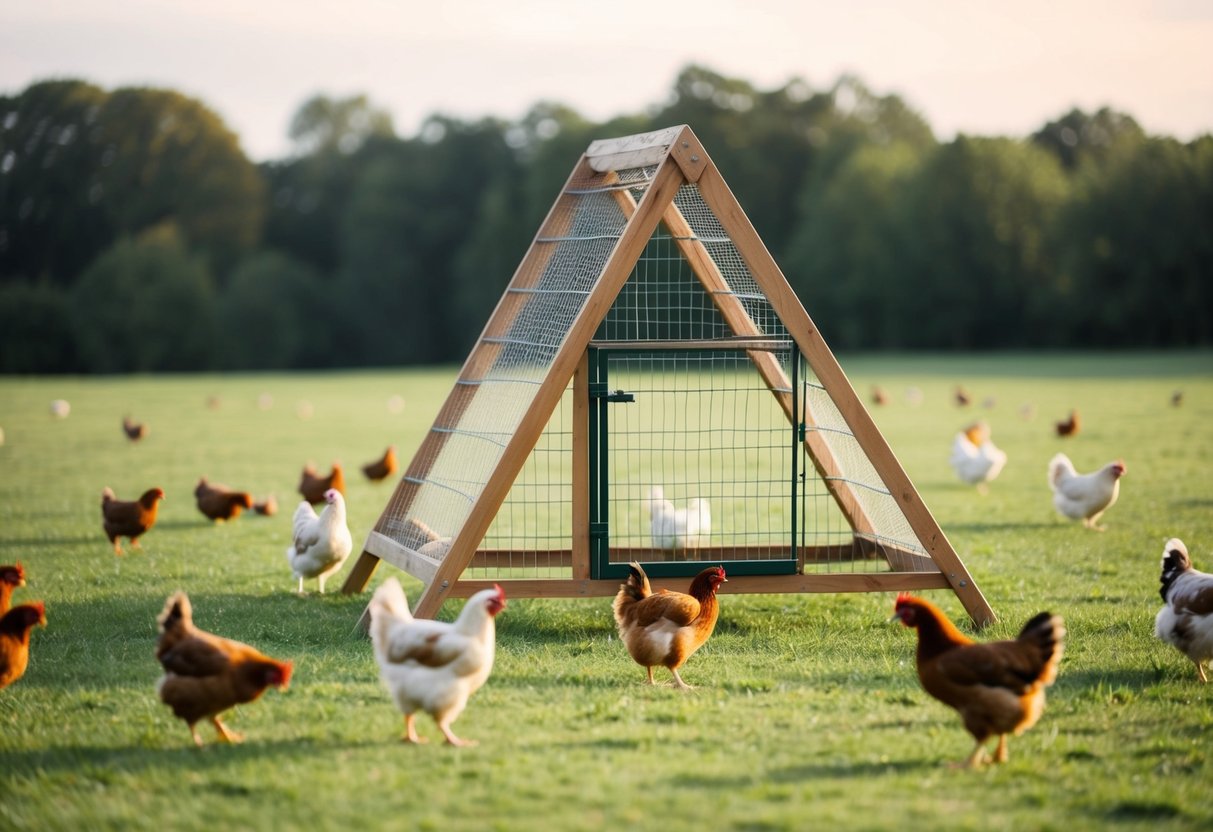
A chicken tractor is a practical, mobile coop essential for poultry care. Unlike traditional coops, this movable design offers several advantages, including fresher grazing areas for birds. The project outlines how to build a cost-effective A-frame chicken tractor using mostly recycled materials, keeping expenses under $150.
To maximize benefits, the structure should be large enough for around 30 relocations throughout the yard. This way, chickens can consistently access new foraging spots while supporting sustainable practices without significant investment.
3. Constructing a PVC Chicken Tractor
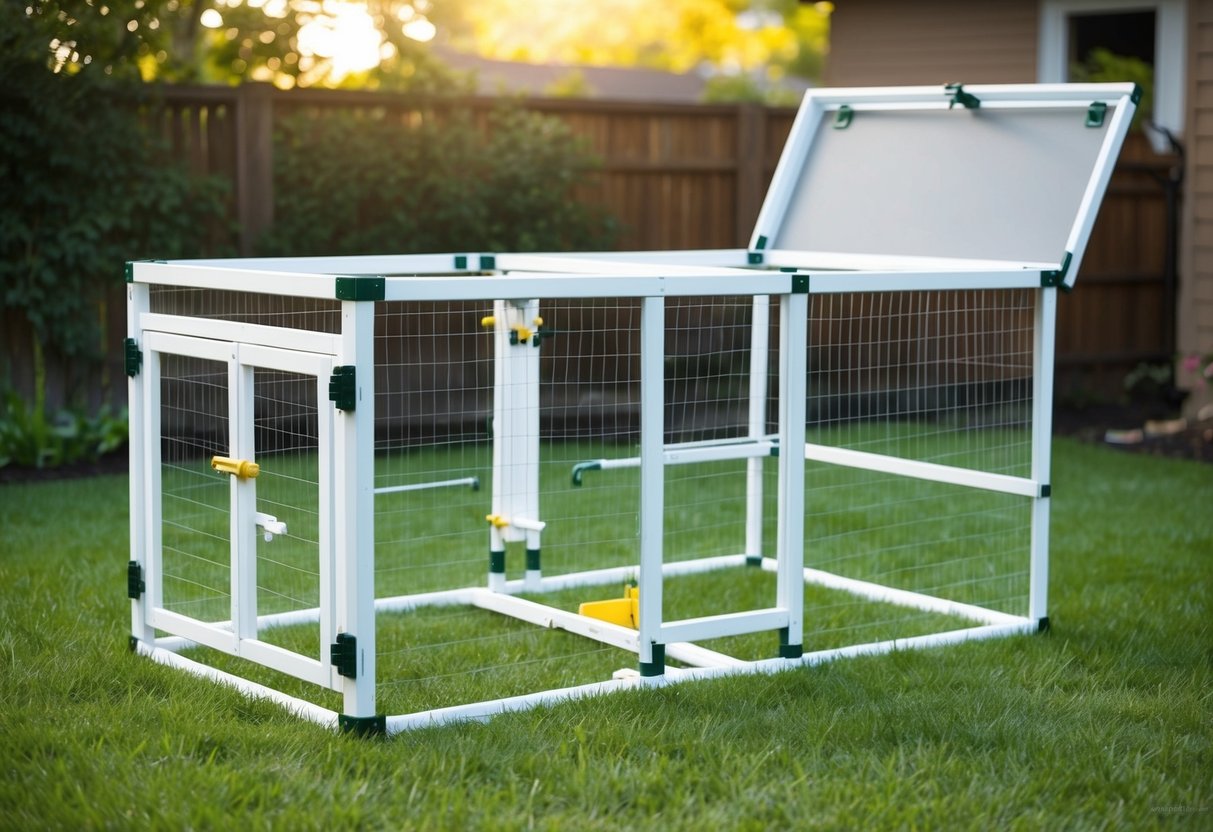
For a simple and budget-friendly chicken tractor design, a redesigned PVC option is ideal for backyard farmers. This structure features a wire floor suitable for housing rabbits and includes fenced shelves for feed bowls. These shelves can be adjusted to support an auto-watering bucket, making maintenance easier. Essential materials consist of 2” PVC pipes, chicken wire, vinyl sheets, wire straps, and #8 screws. With clear instructions available, anyone can build this effective hoop coop quickly, a great choice for those starting with poultry farming.
4. Mobile Chicken Tractor
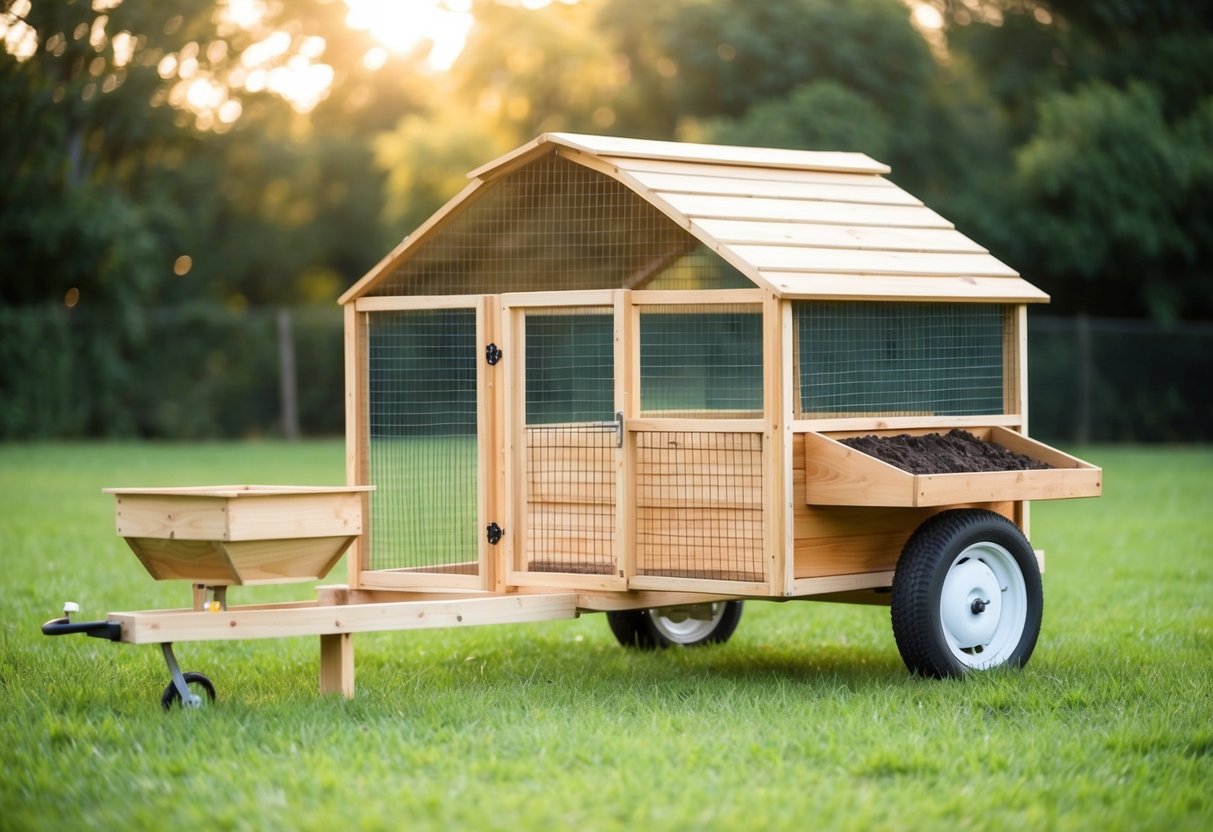
Creating a mobile chicken tractor for backyard hens is both simple and rewarding. This design is approximately 36 inches wide, 98 inches long, and 24 inches high. It typically requires three 2×4 construction pieces, leftover plywood, dowels, chicken wire secured with staples, and wheels from an old tricycle.
To enhance comfort, a shaded box is added on one end, and a removable roosting pole provides a cozy resting spot. Assembly can be completed in a couple of hours, allowing poultry owners to easily move the tractor to fresh grass, ensuring their chickens remain happy and healthy.
5. Mobile Wooden Chicken Tractor Idea
Building a mobile chicken tractor is a great way to give chickens more space to roam. This design can comfortably house 12 to 14 chickens while keeping them protected from predators. The 7×3 frame is made from sturdy 2x4s, pine fence boards, chicken wire, and includes wheels for easy movement. With this plan, users can customize the tractor to fit their specific needs, creating a safe and enjoyable environment for their birds. It’s an excellent project for chicken owners looking to enhance their flock’s living conditions.
6. How to Construct a Chicken Tractor for 25 Chickens
To create a chicken tractor that holds up to 25 birds, one can follow these DIY plans. The design measures 8 feet long and wide, with a height of 25 inches. The coop includes:
- A square top door for easy access
- Detailed images and measurements for guidance
Necessary materials are:
- 2x4s and 2x2s for the frame
- Chicken wire for safety
- Plywood for the coop structure
- Hinges for the door
- Wheels for mobility
- Rope and PVC for additional support
With these resources, anyone can build their own chicken tractor!
7. Portable Foldable Chicken Coop
Create a convenient and mobile chicken coop with ease. This design utilizes lightweight 1×3 furring strips and features a modified A-frame style. The structure is made secure with screw eyes and galvanized nails, ensuring safety from predators.
This chicken coop can be built for around $40-45 in lumber, and a durable, high-quality exterior paint adds a stylish finish. The unique cobalt blue glass knob on the access door enhances both functionality and aesthetics. With a spacious design, it can be easily moved by one person, serving as an ideal home for chickens while providing versatility in any outdoor space.
8. Constructing a Compact Chicken Tractor
For those interested in raising chickens for meat, a well-designed 4×8 chicken tractor can be very effective. This structure can comfortably accommodate 18 to 20 birds. To build it, essential materials include:
- 2×4 lumber
- Wheels
- Plywood
- Chicken wire
- A door hinge and latch
- A handle
Moving this tractor around the yard allows chickens to access fresh grass and bugs, promoting healthier livestock while enhancing soil quality. This design can be customized to fit specific needs.
9. DIY Chicken Coop
Creating a custom chicken tractor can enhance the happiness of chickens. This portable coop allows them to roam, forage, and contribute to soil health. Made from materials like 2x4s, plywood, and chicken wire, it offers flexibility in movement without the hassle of cleaning a traditional coop. This design is perfect for small flocks and minimizes extra costs. Building an upcycled chicken tractor provides a joyful environment for the birds while ensuring they stay safe and productive in one small space.
- Materials Needed: 2x4s, plywood, chicken wire
- Benefits: Mobility, soil fertilization, happy chickens
10. Building an A-Frame Chicken Coop Tractor
Creating an inviting home for backyard chickens is easy with A-frame chicken coop plans. This portable coop, ideal for novice builders, requires just 14 pieces of 2x4s, a sheet of ¾″ t1-11, hinges, chicken wire, screws, staples, and some scrap plywood. The total cost is around $100. The straightforward instructions outline how to construct a spacious nesting box and a perch capable of accommodating up to four chickens. This design allows chickens to roam freely while staying safe and comfortable in their cozy retreat. Get started now for happy, healthy chickens!
11. How to Construct a Chicken Tractor
Creating a chicken tractor can be a fun and rewarding project. Start by gathering materials such as:
- 10 sections of 10ft ½″ conduit
- 8ft wide plastic mesh
- 1-½″ ABS pipe and fittings
- 14-gauge galvanized electric fence wire
- ¼″ grid galvanized hardware cloth
- ABS cement
- 2″ galvanized wood screws
Using repurposed items like scavenged ABS pipe and leftover mesh can add personality to the tractor. This engaging guide offers humor and practical tips for building a unique home for backyard chickens.
12. Create Your Own Backyard Chicken Tractor
Constructing a chicken tractor is a practical way to support a backyard flock. This structure offers 8×12 feet of space and a height of 6 feet, ensuring safety from predators. The movable food and water containers make it easy to manage. To build one, gather materials such as hog panels, plywood, chicken wire, and a tarp. The total cost is around $200. This efficient design allows meat birds to thrive. Follow a DIY guide to successfully create a comfortable living space for your chickens. It’s a rewarding project that enhances backyard farming.
Homemade Backyard Tractor for Raising Chickens
Building a chicken tractor is a fun and practical way to raise chickens. Using a sturdy frame made from 2×4 lumber provides excellent strength. The doors can be made with 1×3 and 1×4 wood pieces for easy access. This secure design features:
- Commercial water nipples for consistent water supply
- Protection from predators both above and below
- Capacity for up to 14 chickens
This project is a great way to involve kids, as it only requires wood screws and a Kreg jig for pocket holes. With no detailed plans needed, anyone can create this useful structure for their backyard flock.
14. Building a DIY Chicken Tractor for Meat Birds
A DIY chicken tractor offers an affordable solution to raising meat birds efficiently. To build one, gather essential materials such as:
- Pressure-treated wood
- Welded wire and hardware cloth
- PVC pipes for skids and the door
- Heavy-duty zip ties and strong rope
- Feed bags for tarping and hay bale string
This design helps keep meat chickens on clean bedding while protecting them from other animals. Don’t forget to secure the door with options like baling twine or a dog leash for added safety.
15. Build Your Own Chicken Tractor
Creating a budget-friendly chicken tractor can be a fun project. For around $100, one can craft a practical A-frame structure that holds up to five laying hens. This design includes necessary features like roosting areas and two nesting boxes that are easy to access from outside.
The open floor allows chickens to engage in their natural behavior of scratching and foraging. With its lightweight design, moving the tractor is simple. Essential materials include:
- Eight 2″x2″x8′ beams
- Two 2″x4″x8′ boards
- 4’x8′ roofing material
- Shingles and chicken mesh
With easy assembly instructions, this project can be completed in just one day.
16. Building a Chicken Tractor for Pastured Broilers in Salatin Style
Creating a chicken tractor for meat birds is straightforward. The construction guide details how to make an affordable, customizable design that keeps chickens safe from predators. Key materials include:
- Pressure-treated wood for sturdiness
- Welded wire and hardware cloth for protection
- PVC pipes for skids and door
- Heavy-duty zip ties and strong rope for secure connections
- Feed bags as a DIY tarp
- Duct tape for extra durability
This setup enables better productivity and savings while providing fresh bedding for the chickens.
17. Portable Chicken Shelter Made from PVC Pipe
Enhance poultry management using this DIY chicken tractor guide. This structure, modeled after salatin-style designs, provides shade and protection for chickens in changing weather. Measuring 12 feet long, 8 feet wide, and 2 feet tall, it needs a few basic materials: lumber, chicken wire, and roofing. Step-by-step directions with measurements make it easy to build. For additional help, a video tutorial is available. The finished tractor can be easily relocated around the yard.
DIY Chicken Tractor for 20 Chickens
Building a lightweight chicken tractor is easy with the right materials. Using PVC pipes, fittings, and tarps, one can create an affordable mobile coop. This design offers:
- Protected perching areas
- Shelter from harsh weather
- Cost-effectiveness for small backyards
With this simple setup, raising grass-fed chickens becomes an enjoyable and budget-friendly venture. Step-by-step instructions and photos make assembly straightforward.
19. Chicken Tractor Plans for Predator Protection
Building a DIY chicken tractor can be easy and fun, inspired by Salatin’s famous design. This smart structure provides excellent shelter from weather while allowing space for up to 40 chickens.
Essential materials include:
- 10 8-foot 2″x4″ boards
- Chicken fencing
- Handles
- Eye hooks
- Carabiners
- Rope
The lightweight aluminum roof makes it mobile, and assembly can be completed in just a weekend. With this design, a strong and practical chicken tractor can be built.
20. Optimal Chicken Tractor Design
Building a predator-proof chicken tractor is essential for keeping pasture-raised broilers safe. Crafting this protective structure involves materials like treated pine, cedar wood, and hardware mesh. To secure the setup against threats like coyotes and raccoons, use staples or u-nails as fasteners.
The design features removable no-dig skirts that are anchored with eight bricks or pavers. Additionally, the hardware cloth is extended six inches at the front for extra security. This DIY project offers a reliable way to ensure flock safety while providing them with mobility and access to fresh grass.
21. Backyard Chicken Tractor Blueprints
Building a chicken tractor is a rewarding project for any backyard flock enthusiast. It requires some essential materials, including:
- 3 cattle panels (4ft x 16ft)
- 2 pressure-treated 2x4s (12ft)
- Untreated 2x4s in various lengths
- Hardware cloth and chicken wire
- Corrugated metal roofing sheets
- Exterior screws
This design allows chickens to forage on fresh grass and insects while remaining protected from predators. The tractor can be easily moved every few days, ensuring that the flock always has access to new foraging areas. With these simple plans, it is easy to create a safe and mobile living space for chickens.
22. Building a Chicken Tractor in the Style of Joel Salatin with Wheels
Creating a Joel Salatin style chicken tractor is a straightforward way to manage meat birds efficiently. To start, gather materials like repurposed 1x4s (10 ft), 2 ft x 10 ft hardware cloth, two-inch deck screws, and 2 ft long 2x4s. Cut the 1x4s to the needed lengths and use the 2x4s as corner supports.
Assemble the frame by securely fastening each piece with deck screws. Then, attach hardware cloth to the frame, ensuring good ventilation and protection for the chickens. A door can be added for easy access. To boost mobility, wheels can be affixed to the base, making it simple to relocate the tractor. This practical design promotes healthy birds while allowing for easy movement around the pasture.
23. Create Your Own Chicken Ark
Building a movable chicken coop is a fantastic way to enhance the life of your birds. This project can be completed in just one day, making it ideal for those with growing flocks. When raising 40 Cornish Cross chickens, having an extra housing option is beneficial for introducing new birds or isolating sick ones.
Gather essential materials such as pre-cut 2x4s, hardware cloth, and download detailed plans for construction. This straightforward DIY build requires minimal effort and time, allowing the caretaker to provide comfortable shelter for their flock quickly.
24. Ultra-Light Chicken Tractor Design
Homesteaders will appreciate this innovative lightweight chicken tractor, designed for easy movement. It allows chickens to roam and forage on the pasture, contributing to their health and happiness. A complete video tutorial guides builders through each step. This large, yet easily maneuverable tractor can be pulled by a single person, simplifying the process of relocating it. Engaging in such projects enhances skills and deepens the understanding of homesteading. Join the adventure of creating practical solutions for raising chickens!
25. DIY Lightweight Chicken Tractor
Creating a simple chicken coop is achievable with clear instructions. This coop design is ideal for keeping meat birds on pasture or a small group of laying hens. It utilizes PVC pipes for easy mobility and requires no wheels or complex machinery, making it lightweight and simple to move by hand.
To build this coop, necessary materials include:
- 4-way PVC fittings
- 5-way and 3-way furniture grade PVC fittings
- 10 ft long 1-½ inch PVC pipes
- 90° and 45° elbow fittings
Follow the detailed plans and parts list to construct a DIY mobile chicken shelter today!
Final Thoughts
Building a chicken tractor is a smart choice for anyone looking to raise chickens in their backyard. This structure not only supplies fresh eggs and meat but also enhances soil health and garden productivity. Additionally, it helps minimize waste and reduces the carbon footprint associated with traditional farming.
Creating a chicken tractor is straightforward. With common materials, basic tools, and some DIY skills, anyone can craft one. It can be customized to match personal style and preferences. Those looking for inspiration should consider a variety of free DIY chicken tractor plans and ideas that suit different needs and environments.
Utilizing this DIY chicken tractor plans guide can empower individuals to embark on building their chicken tractor. The rewards include an efficient farming method that benefits both the garden and the chickens. More than just a functional fixture, it provides the pleasure of constructing something unique and purposeful with one’s own hands. This project can bring lasting benefits and joy for years, fostering a sustainable approach to backyard poultry farming. The experience not only enriches the lives of the chickens but also adds satisfaction to the farmer’s daily routine.
Frequently Asked Questions
What materials are necessary for building a DIY chicken tractor?
To create a DIY chicken tractor, the following materials are commonly used:
- Lumber: For the frame and structure.
- Wire mesh: To keep predators out while allowing ventilation.
- Roofing material: To protect chickens from rain and sun.
- Wheels: For easy movement.
- Latches or locks: To ensure the tractor stays secure.
How can I build a chicken tractor that is easy to move?
To make a chicken tractor easy to transport, consider these tips:
- Use sturdy wheels: Larger wheels make rolling easier over various terrains.
- Add handles: This allows for easier gripping and maneuvering.
- Design a lightweight structure: Use appropriate materials that reduce overall weight without sacrificing strength.
What are the ideal dimensions for a chicken tractor for 25 chickens?
For a chicken tractor to comfortably house 25 chickens, it should have minimum dimensions of:
- Length: 10 to 12 feet
- Width: 6 to 8 feet
- Height: 4 to 6 feet
These dimensions provide enough space for the birds to move around and nest comfortably.
Where can free plans for an A-frame chicken tractor be found?
There are various online resources for free plans to build an A-frame chicken tractor. Websites dedicated to chicken raising or homesteading often feature:
- DIY blogs
- YouTube tutorials
- Online forums
Searching keywords like “free A-frame chicken tractor plans” can yield many helpful results.
How can the safety of chickens in a tractor be ensured against predators?
To protect chickens from potential threats, implement the following safety measures:
- Use sturdy wire mesh: Smaller openings prevent small predators from getting in.
- Secure the tractor: Make sure all openings have secure latches.
- Elevate the tractor: If possible, keep it off the ground to deter some predators.
What advantages do wheels provide on a chicken tractor?
Incorporating wheels on a chicken tractor offers several benefits:
- Mobility: They allow for quick relocation to fresh grazing areas.
- Convenience: Makes cleaning and maintenance much easier.
- Less damage to the yard: Rotating the chicken tractor helps prevent overgrazing.

